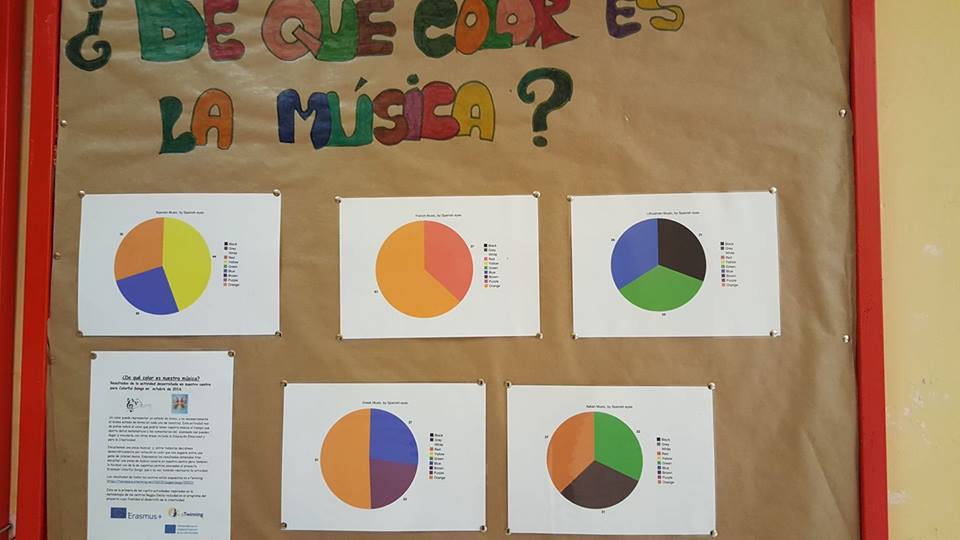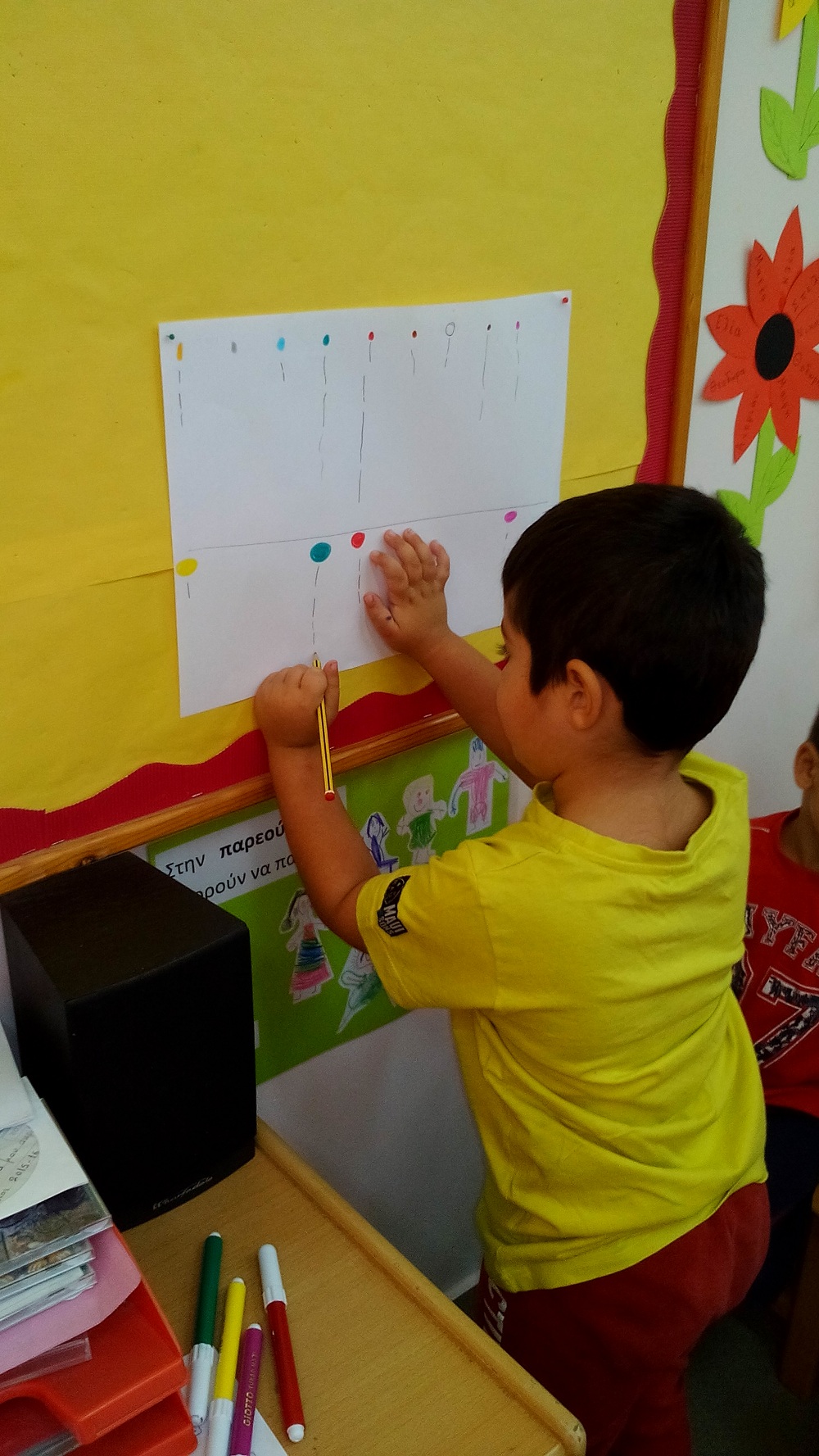A colour can represent a mood, and not necessarily the same mood in everyone of us. This activity can give us a hint towards what the colour our folk music is. This activity can´t be done without numbers and percentages, but please write down any comments from the pupils that are worth saving, they can be pure gold.
1. Each partner chooses a piece of music, that can be considered as traditional folk music from that country. The music is recorded/downloaded/saved as MP3 file, and is sent to each partner. It is important that it is only audio, with no narration, song, pictures, or anything else that can disturd the inspiration from the music.
2. Before you send it, you make a vote in your class, to see what colour they think their own music is. You hang 10 pieces of coloured cardboard on the wall. The colours should be black, grey, white, red, yellow, green, blue, brown, purple and orange. Pupils should choose one of these colours each. Write down the votes and save them.
3. Each partner now has the task to determine what colour the other partners traditional music is. Doing like this is suggested:
1. Hang the 10 pieces of coloured cardboard on the wall.
2. Listen to the first piece of music. Don´t tell the pupils what country the music is from, they should only have music as inspiration.
3. If the class can agree on a colour, then you write down the colour and go to the next piece of music. The result could be, "Country name-100% green"
4. If you can´t agree on a colour, then start eliminating colours by talking and maybe voting. Continue to remove carboards from the wall until you have two or three colours left. Make a vote and write down the percentage of votes for each two or three colours. Here the result could be "Country name, 70%blue, 30%purple"
5. When all partners countries have given their votes (January 17), the result is gathered and presented visually in Calc/Excel or like.
Italy  France
France  Greece
Greece  Lithuania
Lithuania Spain
Spain

2nd Kindergarten of Ierapetra-Crete-GREECE

